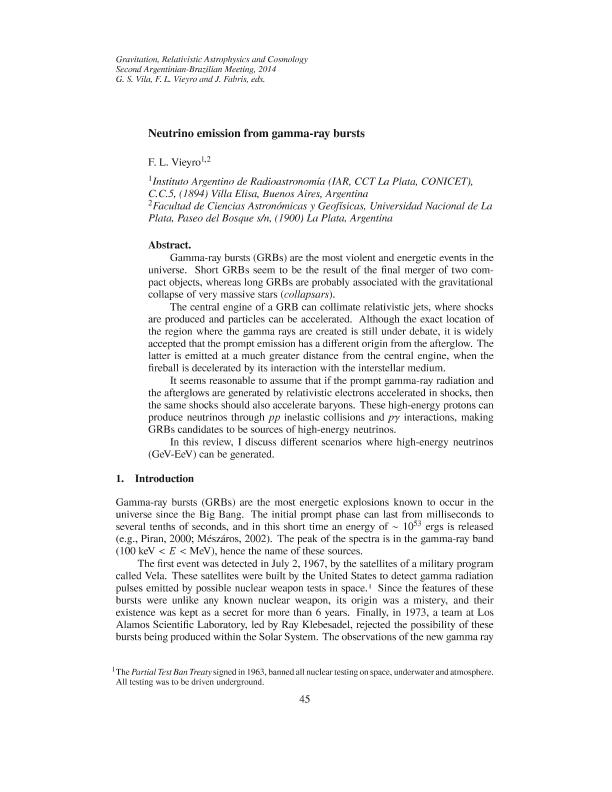Evento
Neutrino emission from gamma-ray bursts
Colaboradores:
Vila, Gabriela S.; Vieyro, Florencia L.; Fabris, Júlio C.
Tipo del evento:
Workshop
Nombre del evento:
Second Argentinian-Brazilian Meeting: Gravitation, Astrophysics, and Cosmology (GRACO)
Fecha del evento:
22/04/2014
Institución Organizadora:
Instituto Argentino de Radioastronomía;
Título del Libro:
Proceedings of the Second Argentinian-Brazilian Meeting: Gravitation, Astrophysics, and Cosmology
Editorial:
Asociación Argentina de Astronomía
ISBN:
9789872494827
Idioma:
Inglés
Clasificación temática:
Resumen
Gamma-ray bursts (GRBs) are the most violent and energetic events in theuniverse. Short GRBs seem to be the result of the final merger of two compactobjects, whereas long GRBs are probably associated with the gravitationalcollapse of very massive stars (collapsars).The central engine of a GRB can collimate relativistic jets, where shocksare produced and particles can be accelerated. Although the exact location ofthe region where the gamma rays are created is still under debate, it is widelyaccepted that the prompt emission has a different origin from the afterglow. Thelatter is emitted at a much greater distance from the central engine, when thefireball is decelerated by its interaction with the interstellar medium.It seems reasonable to assume that if the prompt gamma-ray radiation andthe afterglows are generated by relativistic electrons accelerated in shocks, thenthe same shocks should also accelerate baryons. These high-energy protons canproduce neutrinos through pp inelastic collisions and pγ interactions, makingGRBs candidates to be sources of high-energy neutrinos.In this review, I discuss different scenarios where high-energy neutrinos(GeV-EeV) can be generated.
Palabras clave:
Neutrinos
,
Gamma-ray bursts
Archivos asociados
Licencia
Identificadores
Colecciones
Eventos(IAR)
Eventos de INST.ARG.DE RADIOASTRONOMIA (I)
Eventos de INST.ARG.DE RADIOASTRONOMIA (I)
Citación
Neutrino emission from gamma-ray bursts; Second Argentinian-Brazilian Meeting: Gravitation, Astrophysics, and Cosmology (GRACO); Buenos Aires; Argentina; 2014; 45-54
Compartir




